“Some say so, Others say so.” Anyone who travels in Rheinhessen will hear this stubborn saying sooner or later. In the 2021 wine year, this was particularly often the case, because what seemed very unusual to many a young winemaker after three hot years was a fairly normal year for the old hands. In any case, the factors for healthy grapes were particularly diverse and almost a gamble at some times of the year.
Winter
With a fabulous 20 vintage in the cellar, we started the new year relaxed and full of energy.
The yield-reducing pruning had saved us from massive drought stress in 2020 and turned out to be a good decision, which is why we also took care to avoid crossing vines and excessive density as much as possible when pruning in 2021. In the 2021 wine year, this should help us in a completely different way, but more about that later.
In January and February there were many beautiful and varied days during the pruning. Sometimes in moderate temperatures in the sun and sometimes with a cap in romantic winter landscapes.
The winter was a little colder than in previous years. However, the clearer difference to 2018 to 2020 was then already apparent with much more frequent and heavier precipitation in March and April. Temperature peaks around 28° should not occur in 2021 until May and only very sporadically. In the previous year, the winter jackets had already been mothballed weeks before.
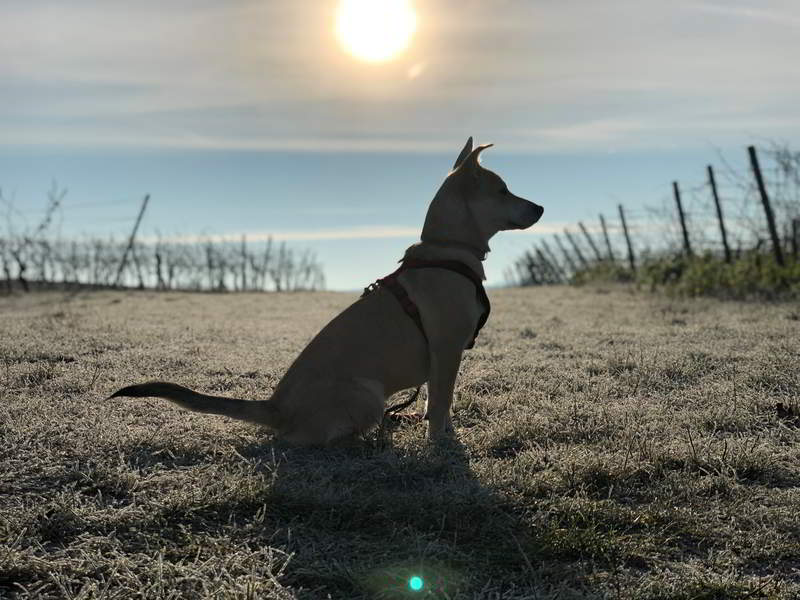
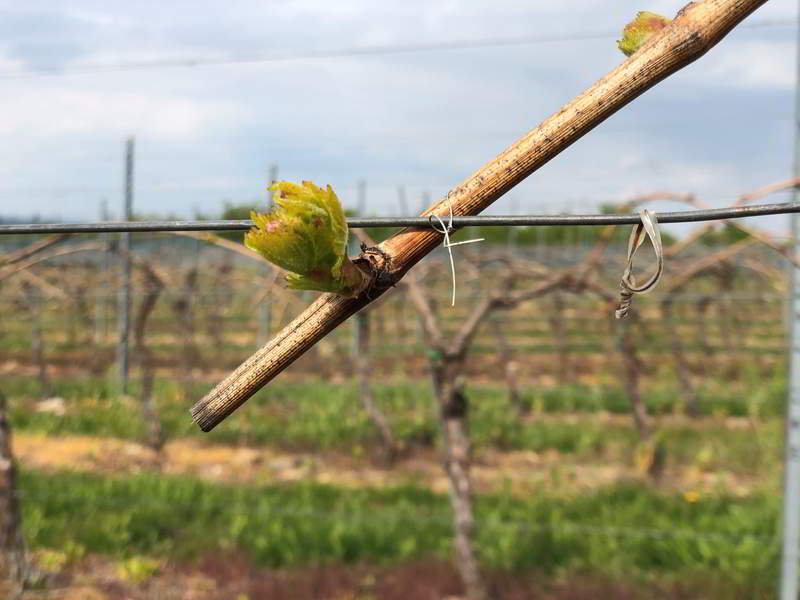
Spring
Spring in the vineyard began with the swelling of buds late in April. The unfolding of the first leaves was observed in early May, almost a whole month later than in 2020. Accordingly, we did not have to worry about frost damage, because the late frosts were rather early compared to the vegetation.
The “Weingarten”, where we greet our guests in a relaxed atmosphere, surprisingly rarely fell completely into the water despite all the rainfall, thanks to the new parasols (used more as umbrellas this year). Once, however, we cleared the just decorated tables because of the heavy rain again – in wetsuits from the last surf vacation.
For most of the month, temperatures hovered below 20°C and precipitation was moderate but frequent. After the dry previous years, this was still very welcome at this time. The dry soil was able to recover and the mixed weather provided not only varietal but also site and location specific differences. The situation was relaxed into the summer and many work steps could be carried out with a time delay.
At the same time, we also bottled the 2020 vintage. For a small winery, a bundled bottling is always a mammoth task with many stumbling blocks. So we filled part of our barrique white wines in mid-May, part at the end of May, and only at the beginning of June. A bit more relaxed than usual and with a bottle store full of great wines, we then started the summer months.
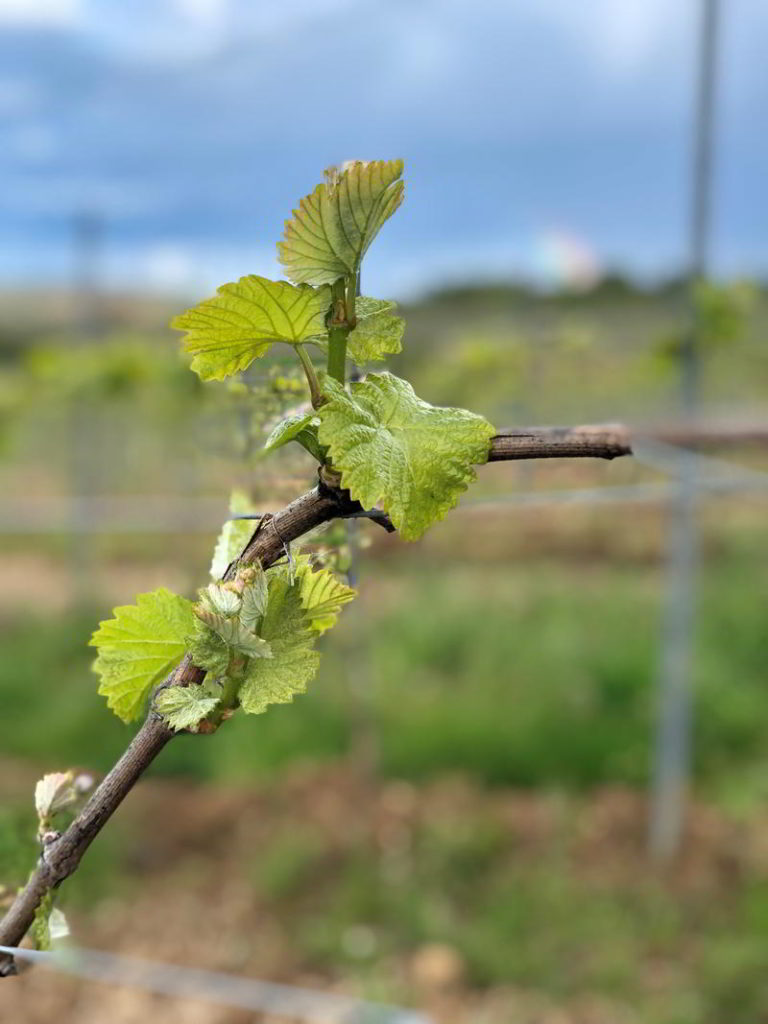
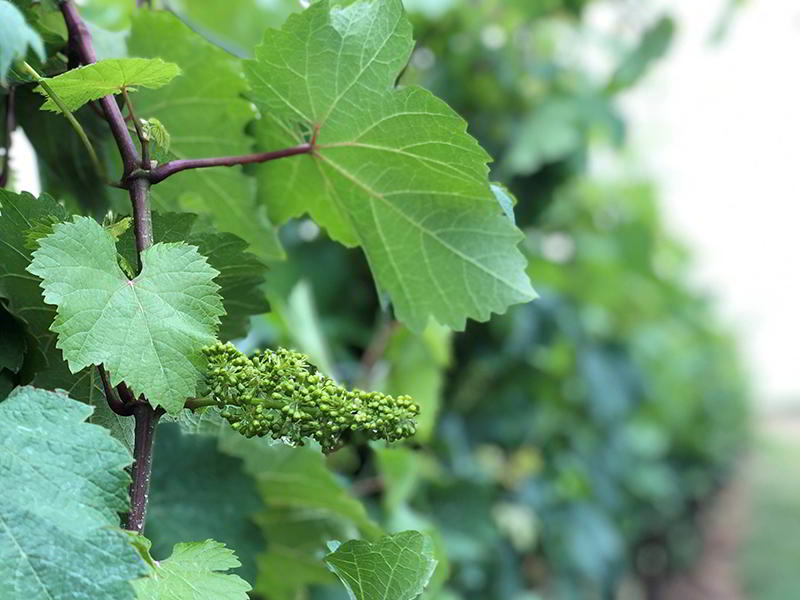
Summer
The late start, moderate temperatures and abundant rainfall caused the foliage walls to grow explosively in June. In keeping with the wet weather and denser growth, disease pressure also increased. Progress in the individual vineyards was highly variable, but rapid. Thus, while in some vineyards shoots were hastily stapled, elsewhere defoliation was already underway for the first time to improve air circulation in the warm, humid climate.
The vineyard season remained mixed and we were all the more pleased with the positive response and despite all the showers fully booked days. Warm and sunny days, as seen in the picture from June 11, were nevertheless rather rare.
The abundant rainfall, which up to this point had been even more welcome than the past dry years, turned into a horrific disaster in mid-July. The year 2020 showed its cruelest side and cries for help and terrible pictures of colleagues and friends in flooded areas quickly made the rounds. Those who were spared, like us, helped where and how they could. But it is still far from enough, because unfortunately the fate of those affected slipped out of the public eye quite quickly. Help is still needed and everyone who has a few euros or some time to spare should donate something or register as a helper.
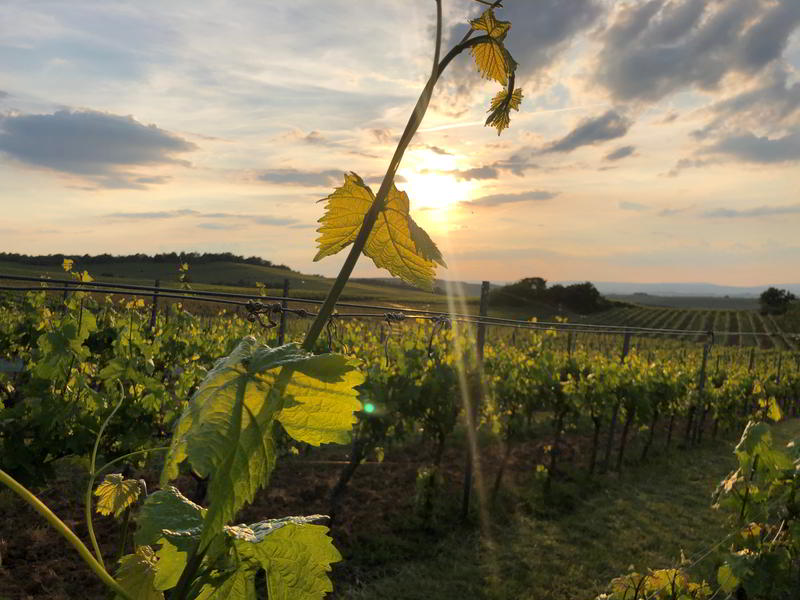
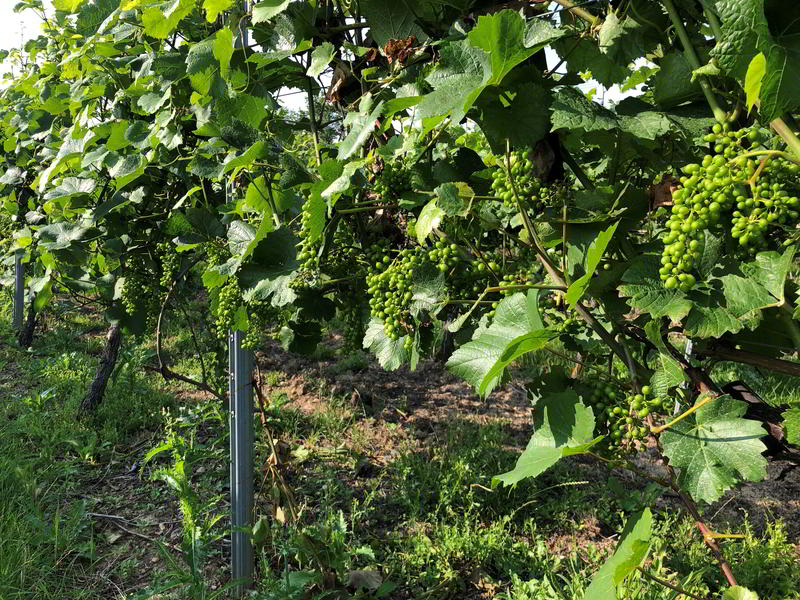
This can be done e.g. here https://www.ahrtal.de/ahrwinzer-hilfe or here https://www.aktion-deutschland-hilft.de/de/lp-hochwasser-deutschland/
Harvest
August brought maturity to the vineyards and the long-awaited summer days finally arrived, at least in our little oasis behind the protective weather aisles. Nevertheless, it remained humid. The sunshades that had been welcome the previous year, the foliage over the grapes, would have become a breeding ground for fungal infections and cherry vinegar flies in 2021. All sheep had full schedules, so we once again provided ventilation and sun by machine, but also by hand.
Due to this measure, but also because of the reduced pruning of the vines and Hans-Joachim’s lucky hand for plant protection, the majority of our grapes ripened healthily and benefited from warm and sunny September days thanks to the late development. The 21 grapes got a tremendous variety of flavors with moderate sugar and pleasant acidity levels. Optimism was spreading.
But there was still a lot of work waiting for us. Thanks to Luisa, who this year completed her internship with us in preparation for her studies in viticulture and oenology in Geisenheim, we had two more very dedicated hands in action, without which so much effort would have been difficult to manage. After all preparations in the cellar had been completed, literally every grape was evaluated in the vineyard in order not to give away the potential of the 21st vintage by diseased and rotten grapes. Fortunately, the different ripeness of the individual vineyards observed in the summer had carried through, so that the calculated harvest dates were far apart depending on the grape variety and individual vineyard. For this reason, and because the low temperatures allowed harvesting also during the day, we had much more time than in previous years. So much that we still had time for several heart projects in addition to the critical pre-selection.
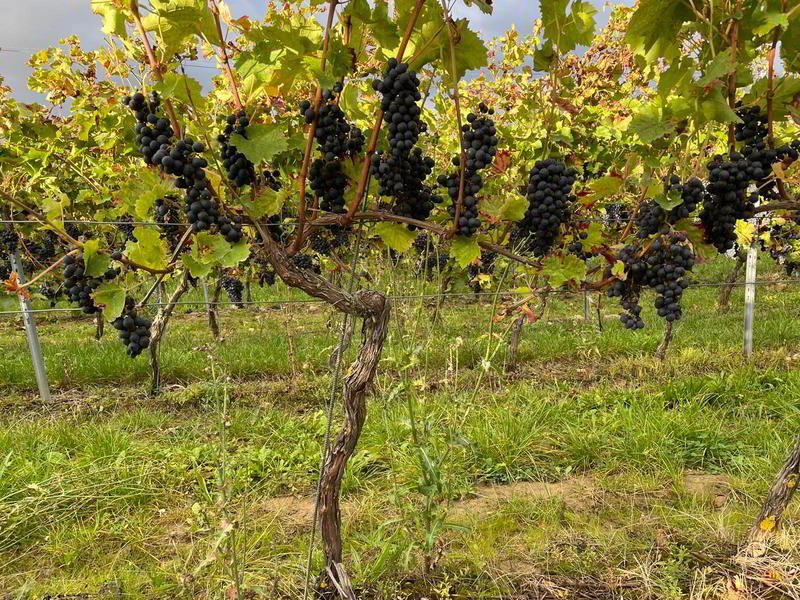
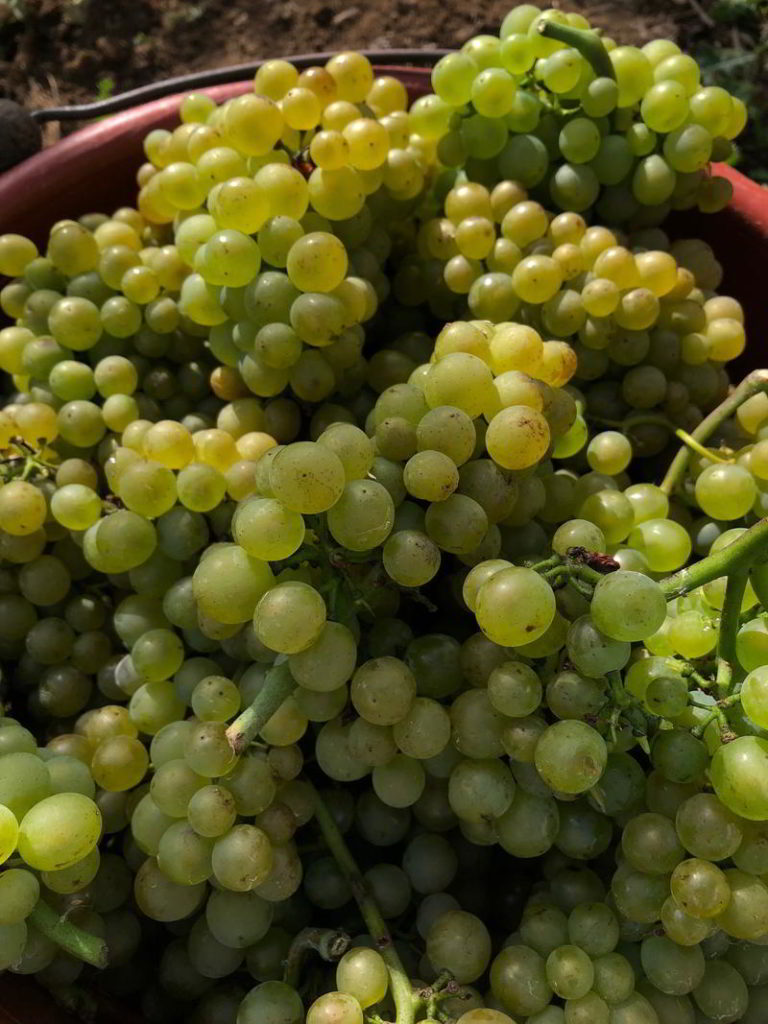
First was the hand harvest of our youngest vineyard, the Pinot Blanc in the Gumbsheimer Schlosshölle. It ripened early in its sunny and well-ventilated site and had formed considerable amounts of noble rot. The healthy botrytis causes the sugar and extract values to skyrocket and promotes complex aromatics even in wines from young vines. Nevertheless, due to the weather, we meticulously checked each grape for health and spent an entire but wonderful day in the young Pinot Blanc. Surprisingly little was sorted out and we look forward to upcoming vintages from this promising vineyard.
The next project was the harvest of a site sparkling base wine from the Heerkretz. The healthy third grapes that we had cut last year at the green harvest still on the ground, to bring the maturity and extract in the first grapes, is now developed as a sparkling base wine and goes into bottle fermentation in 2022. The conditions for this were perfect, because we harvested 100% healthy and physiologically ripe grapes with high acidity values, whose harvest at the same time still increased the quality of the site Riesling.
In one of our oldest vineyards, the 47-year-old Silvaner am Nußbaum, the wet year had a particularly severe impact. The vigorous grape variety proliferated so much in many places, despite defoliation, that rotten grapes were found. However, the healthy specimens were so tasty that we decided to pay our last respects to the vineyard and this year to vinify a hand-picked single-vineyard Silvaner in barrique. Paul inspired his family for the action and despite the reinforcements we were busy for a whole day with handpicking and selection of grapes.
In order to preserve the Heerkretz Riesling, which we particularly appreciate, in the long term, we started in 2021 with a selection book and cut down old and diseased vines as far as they were still healthy or removed them in order to replant in the coming years, if necessary, if no new shoots can be grown from the existing root system. It is particularly easy to recognize diseased vines in the fall when the grapes are ripening, since they can produce no or only a few healthy grapes.
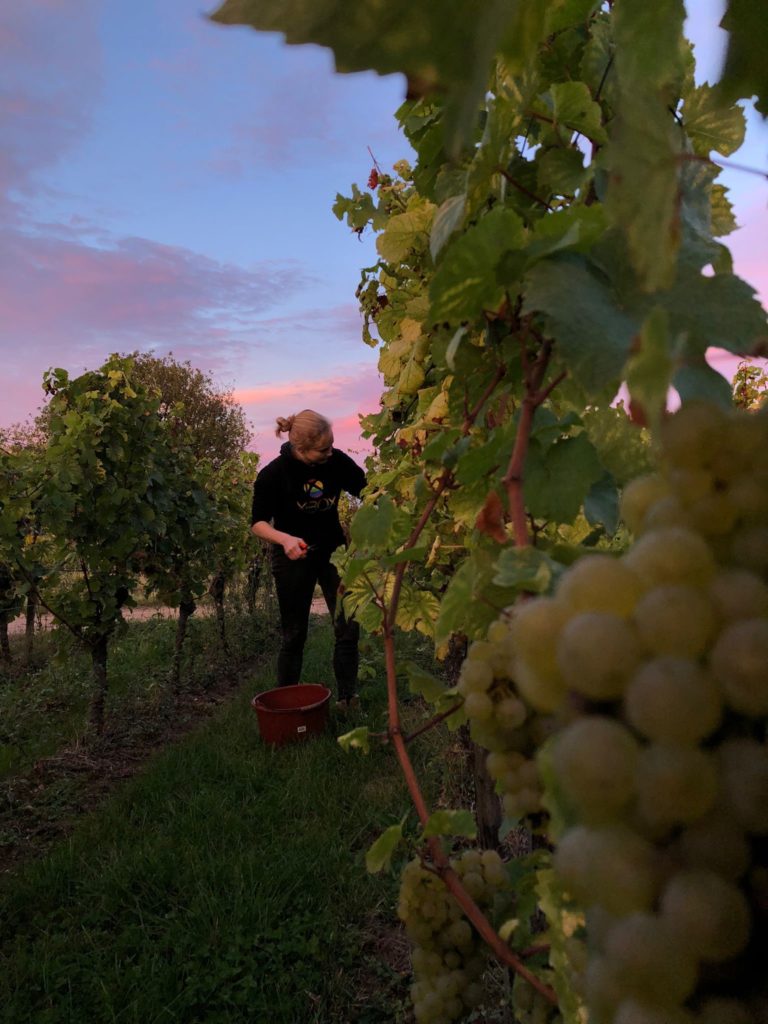
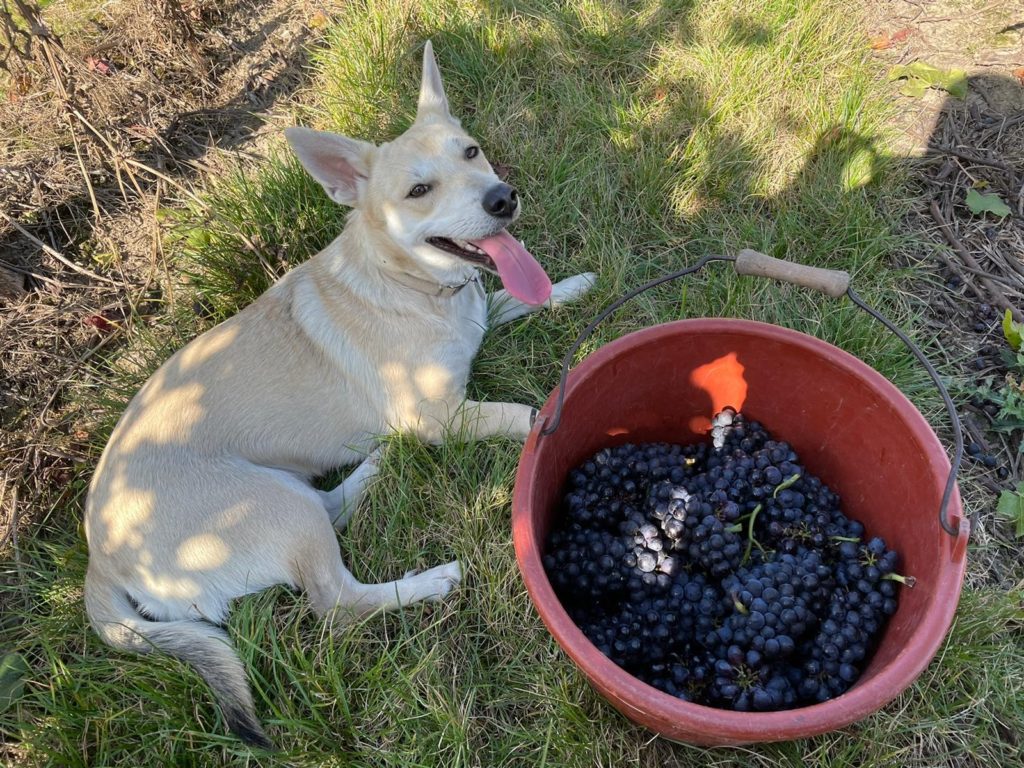
The last project also benefited the Lagen-Riesling. In order to get a little more flavor selection and a little less risk in the fermentation without pure yeasts, i.e. spontaneous fermentation, of the Lagen-Riesling, we let macerated grapes ferment in three different preserving jars already in the vineyard. Luisa took the grapes from three different sections of the vineyard and let them ferment exactly there. During the later sensory testing, we decided on two of the three approaches and added them to the Riesling must as a fermentation starter. The wine fermented faster than last year and also more continuously.
Vintage Conclusion
Aging in the cool produced aromatic, fruity wines. The moderate temperatures have also maintained the sugar, and thus the alcohol levels in the dry vinified wines, as well as the fresh acidity for which our cool-climate wines stand. Our claim to bring only healthy grapes into the cellar was associated with enormous labor and yield loss. The red wine varieties were massively selected, as well as vigorous white wine varieties. During processing, we proceeded even more gently and, for example, applied less pressure during transport and pressing of the grapes in order to reduce the risk of phenolic wines.
The harvest lasted almost twice as long as last year, in line with the slower ripening, yet we were busy around the clock every single day for the three and a half weeks. The nights were quieter, otherwise the marathon would not have been endurable. The result, at least for the friends of elegant and fine fruity wines, has become even more inspiring. The cellar smells of flowers and fruits at the end of the year. Fermentation is more restrained because of the cold temperatures. Even without tasting, the Flora is a pleasure.
A sample of the wines then compensates for every single hour of work. Varietal typicity comes strongly to the fore and the characteristics of the sites do not overlap, even if they remain clearly recognizable. Whereas the past vintages were dominated by the site and the strength of the soils due to the drought, now typical characteristics of the vineyard are increasingly in the foreground. Our healthy harvest allowed us an even more reduced development and longer storage on the full yeast. Fewer bunches per vine concentrate the special aromas of cool ripeness. The cold harvest and low temperatures after the harvest allowed a controlled and slow fermentation under natural conditions and without the use of refrigeration.
The Rieslings benefit enormously from the somewhat more typical climate of the 2021 vintage and present themselves with exceptional diversity and freshness. Bouquet grape varieties show their usual floral notes and behave a bit more dignified and yet exciting, simply cheerful and easy to drink. Burgundy varieties are less opulent, but more delicate and elegant, very elegant. In the red wines, the emphasis is less on the powerful notes and instead a very inviting fruit.
Overall, the 21 vintage is dominated by finely fruity rather than bulky wines. They are round and juicy. Nevertheless, there may and will be exceptions, and we are already looking forward to presenting them to you.
